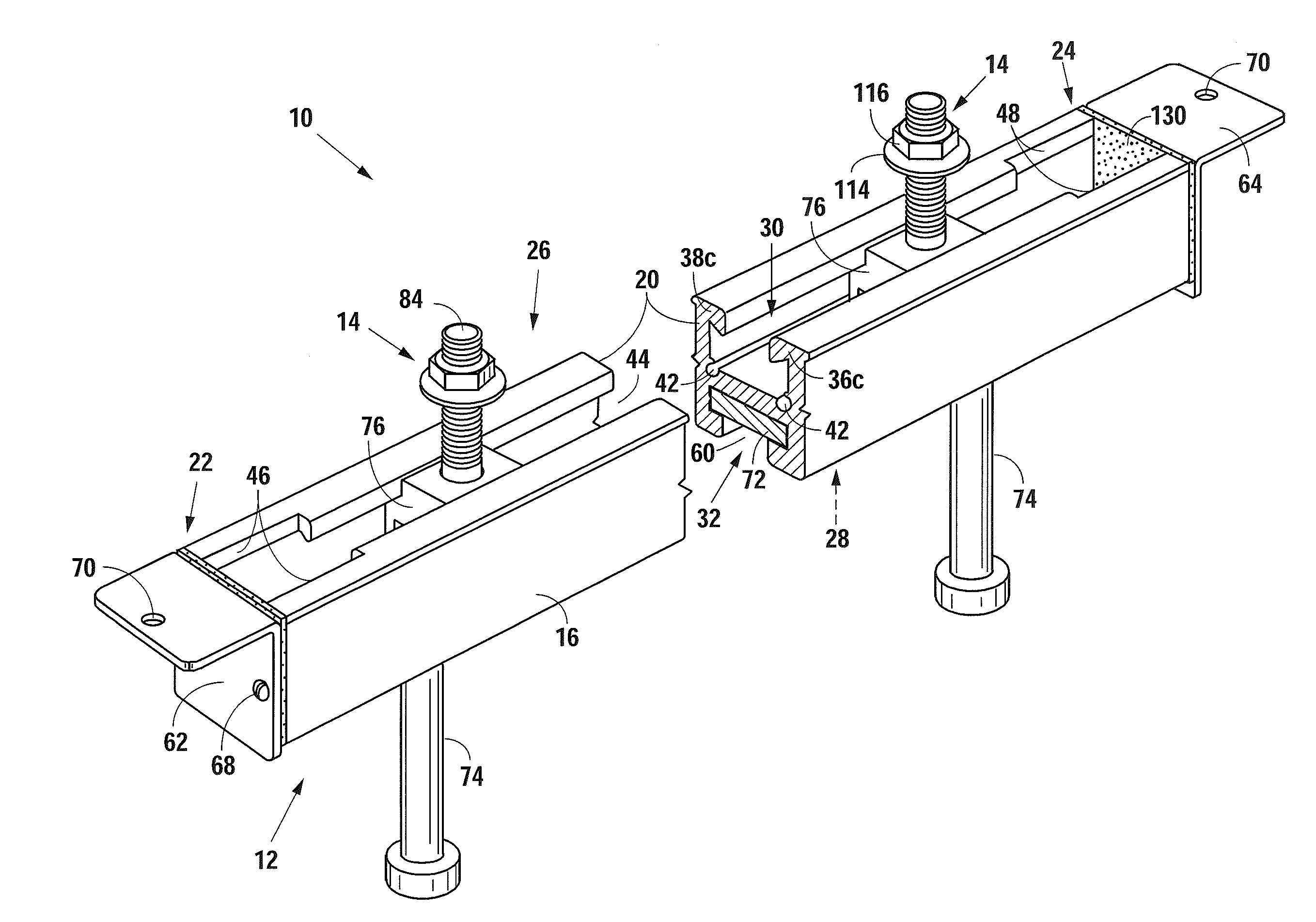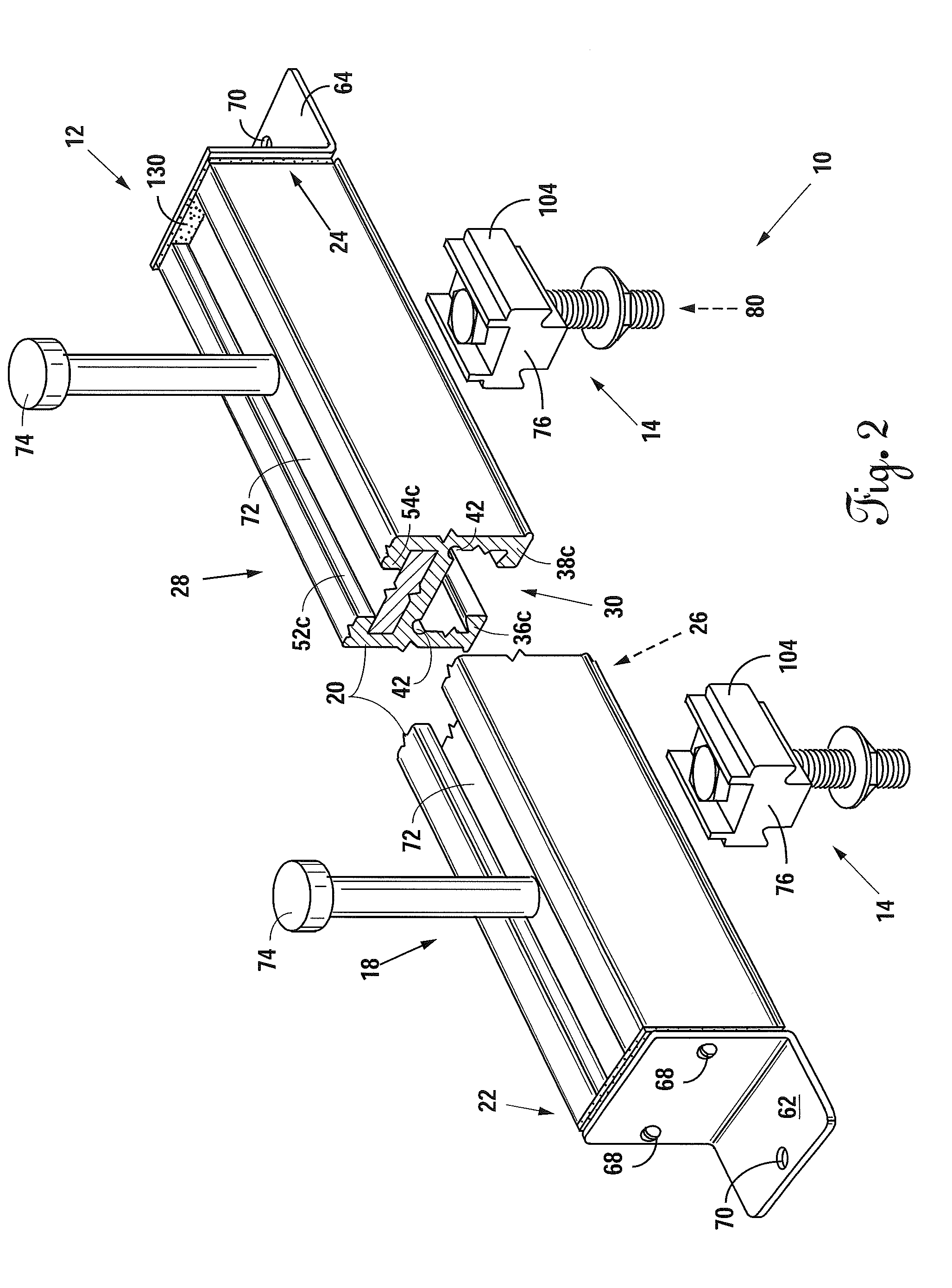Cast-in anchor system
a technology of cast-in anchors and concrete, which is applied in the direction of threaded fasteners, screws, rod connections, etc., can solve the problems of weakened by galvanic corrosion, and aluminum′ being generally disfavored as a material for reinforced concrete. to achieve the effect of preventing galvanic corrosion
- Summary
- Abstract
- Description
- Claims
- Application Information
AI Technical Summary
Benefits of technology
Problems solved by technology
Method used
Image
Examples
Embodiment Construction
[0041]Referring to FIGS. 1 and 2, perspective views of the preferred embodiment of a cast-in anchor system 10 of the present invention are shown. In general, the cast-in anchor system 10 has a cast-in anchor assembly 12 engaged with one or more bolt-retainer assemblies 14. The cast-in anchor assembly 12 and the bolt-retainer assembly 14 each have various components and are individually discussed herein below.
[0042]The cast-in anchor assembly 12 has a cast-in anchor 16 attached to a base assembly 18. The cast-in anchor 16 is a length of material 20 extending from a first end 22 to a second end 24. Although the preferred length of material 20 is an extruded aluminum alloy, it could be made from any number of materials, whether extruded or not. The length of material 20 has a first side 26 and a second side 28 separate from the first side 26. An anchor channel 30 extends at least partially along its first side 26 and a plate channel 32 extends at least partially along its second side 2...
PUM
| Property | Measurement | Unit |
|---|---|---|
| angle | aaaaa | aaaaa |
| length | aaaaa | aaaaa |
| lengths | aaaaa | aaaaa |
Abstract
Description
Claims
Application Information
 Login to View More
Login to View More - R&D
- Intellectual Property
- Life Sciences
- Materials
- Tech Scout
- Unparalleled Data Quality
- Higher Quality Content
- 60% Fewer Hallucinations
Browse by: Latest US Patents, China's latest patents, Technical Efficacy Thesaurus, Application Domain, Technology Topic, Popular Technical Reports.
© 2025 PatSnap. All rights reserved.Legal|Privacy policy|Modern Slavery Act Transparency Statement|Sitemap|About US| Contact US: help@patsnap.com



